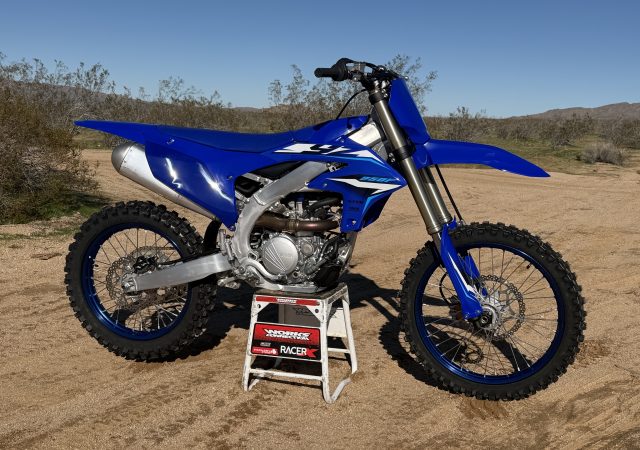
For this edition of Classic Ink, we are going to look back at an ad for Yamaha’s motocross lineup for 1984.
Today, it is accepted that all the machines raced on the AMA circuit are based on production hardware. Eli Tomac’s Yamaha is certainly trick, with lots of one-off goodies, but its basic DNA is rooted in the same machines that you and I can pick up off the showroom floor. In 1984, however, that was not the case. David Bailey’s Honda RC250, Mark Barnett’s RH250, and Jeff Ward’s SR125 were pieces of one-off exotica that often cost ten times the value of a production machine. While all the manufacturer’s advertising campaigns boasted that their production machines were basically factory bikes for the masses, this bit of marketing hyperbole was rarely an accurate assessment of the true connection between the race team and production.
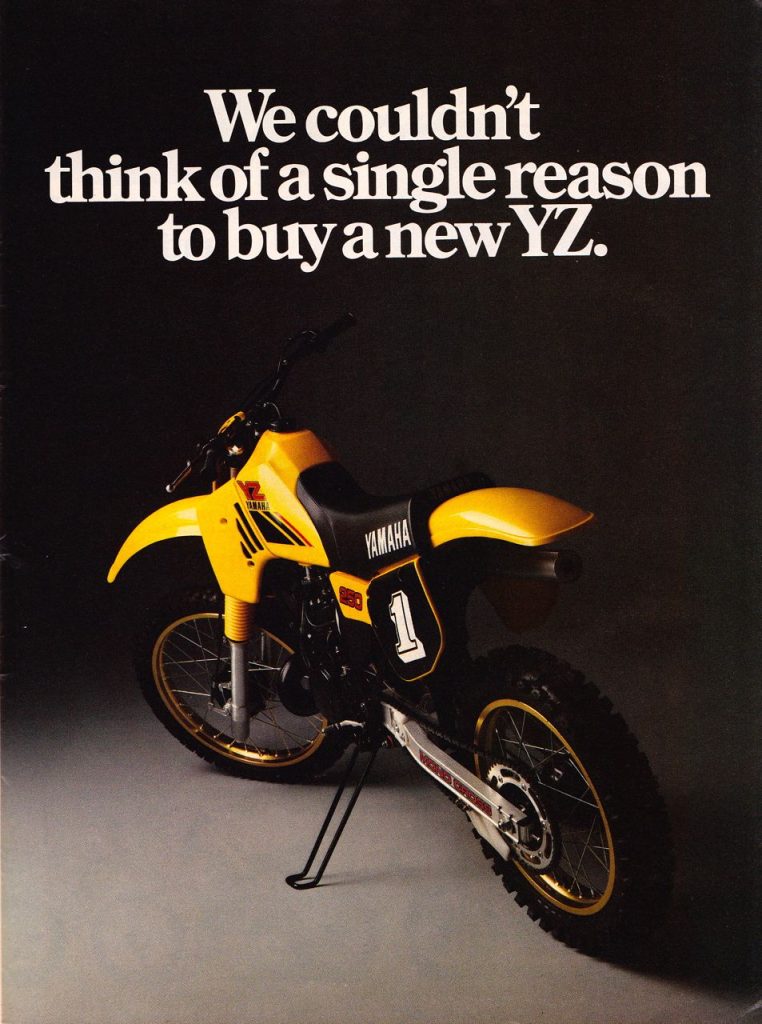 The last of the yellow YZs in the US, the 1984 Yamaha lineup is one of my favorite-looking of the 1980s. Photo Credit: Yamaha
The last of the yellow YZs in the US, the 1984 Yamaha lineup is one of my favorite-looking of the 1980s. Photo Credit: Yamaha
In 1984, however, the distinction between what the factory team raced on Sunday and what you could buy on Monday was forever altered by Yamaha. After more than a decade of campaigning exotic works bikes on the AMA circuit, Yamaha’s US race team took the bold step to race production-based machines in 1984. In their press releases and ad copy this was spun as a vote of confidence in their production machinery, but many in-the-know saw it for what it really was – a budget-cutting move by Yamaha. Back in Japan, their home economy was suffering through a severe recession and here in the USA, Honda’s seemingly unlimited racing budget was making it difficult for the other Big Four to compete. Escalating costs and an ever-tightening US budget meant that exotic works machines were not in the cards for Yamaha’s American team in 1984. In Europe and Japan the exotica would continue, but here in the States, Broc Glover and Rick Johnson would be forced to race production YZs against the ultra-trick HRC machines of Ron Lechien, Johnny O’Mara, and David Bailey.
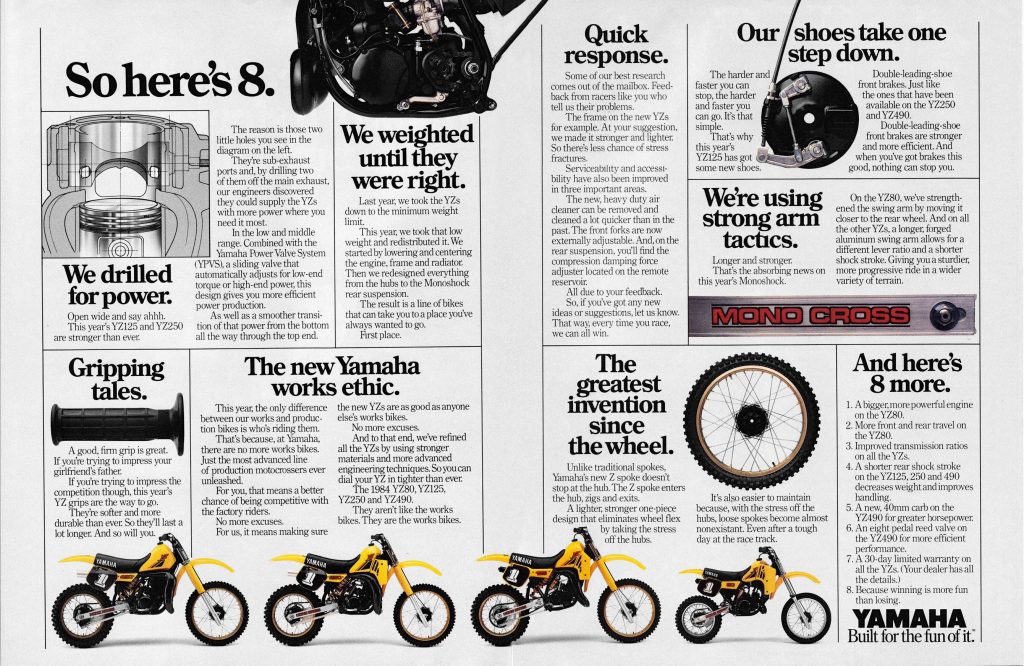 All-new for 1984, everything from the grips to the wheels on the YZs were redesigned for improved performance. Photo Credit: Yamaha
All-new for 1984, everything from the grips to the wheels on the YZs were redesigned for improved performance. Photo Credit: Yamaha
While this was certainly a blow to Yamaha’s race team efforts, their production machines in 1984 had a lot going for them. All four machines were all-new with major redesigns to the bodywork, chassis, suspensions, and motors. All new “Z-spokes” promised to literally reinvent the wheel, reconfigured layouts lowered the center of gravity, and more aggressive geometry looked to sharpen handling. The YZ80 featured a deeper-breathing airbox, all-new porting, a redesigned transmission and a two-pound savings in weight. The YZ125 got bigger forks, a larger airbox, a deeper breathing carb, new “sub-exhaust” ports, and a second actuator for its front shoes. The YZ250 shared the 125’s fancy new exhaust porting, freer-breathing airbox, and spacy wheels, but added new externally adjustable Kayaba forks and a major dose of horsepower. The YZ490 benefitted from a redesigned head, all-new porting, a bigger carb, two more petals for its reed-valve, and a less pudgy tank. Colors remained yellow and black across the board with all four machines offering slick new looks and a handsome profile.
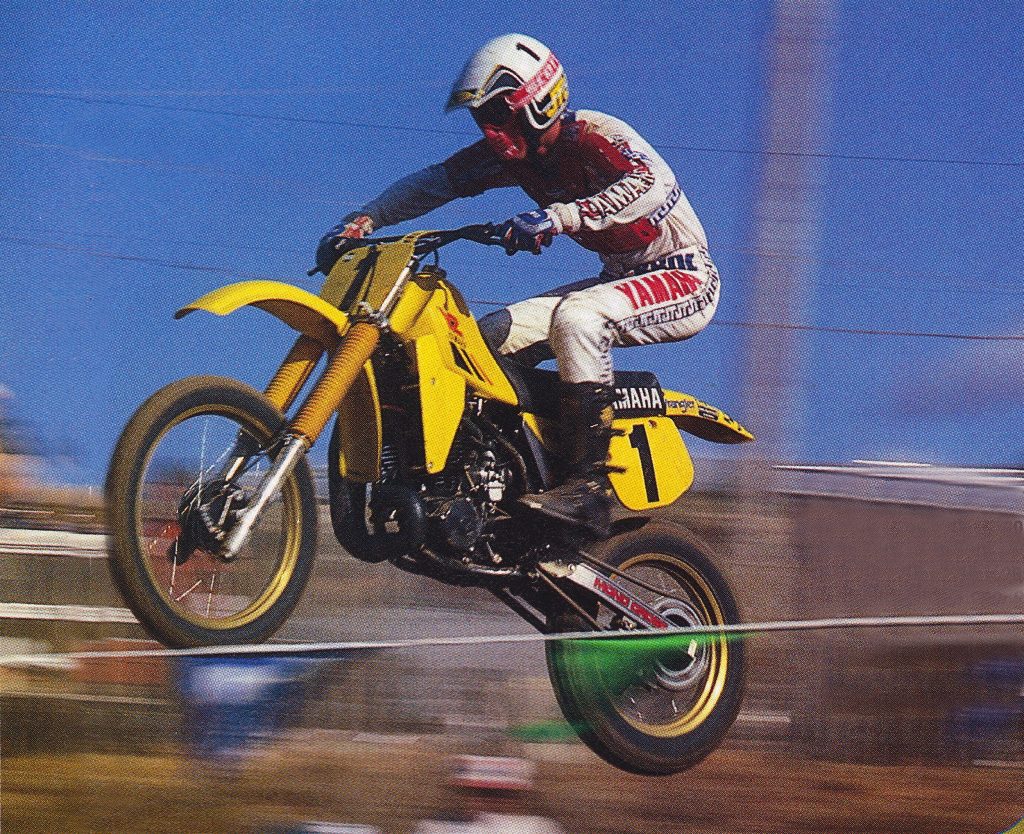 Aside from a Simmons Anti-Cavitation fork kit, an Öhlins shock, some carful motor massaging, and a big air scoop, Glover’s factory YZ490 was not very different than the bike you could buy right off the showroom floor in 1984. Photo Credit Mark Kariya
Aside from a Simmons Anti-Cavitation fork kit, an Öhlins shock, some carful motor massaging, and a big air scoop, Glover’s factory YZ490 was not very different than the bike you could buy right off the showroom floor in 1984. Photo Credit Mark Kariya
On the track, the YZ250 and YZ490 had a lot going for them in 1984. Both bikes were absolute rockets with more than enough power to go head-to-head with the works competition. Glover and Johnson only needed minor mods and a bit of fine tuning to keep their exotic competition within reach on the starts. Dual-leading shoe front brakes looked stone-age compared to the disc brakes found on the Honda and Kawasaki, but they worked well and offered excellent feel for those not yet accustomed to the sudden power of the new hydraulic binders. The suspension on both big Why-Zeds was improved for ’84 but neither were particularly remarkable in a class dominated by Suzuki and their excellent Full Floater rear end. While neither machine proved to be a class standout, both bikes proved amazingly competitive on the AMA circuit. Rick Johnson took his production YZ250 to the 1984 National Motocross championship and Broc Glover piloted his nearly stock YZ490 to two wins and a second in the 500 National Motocross standings against David Bailey’s awesome RC500.
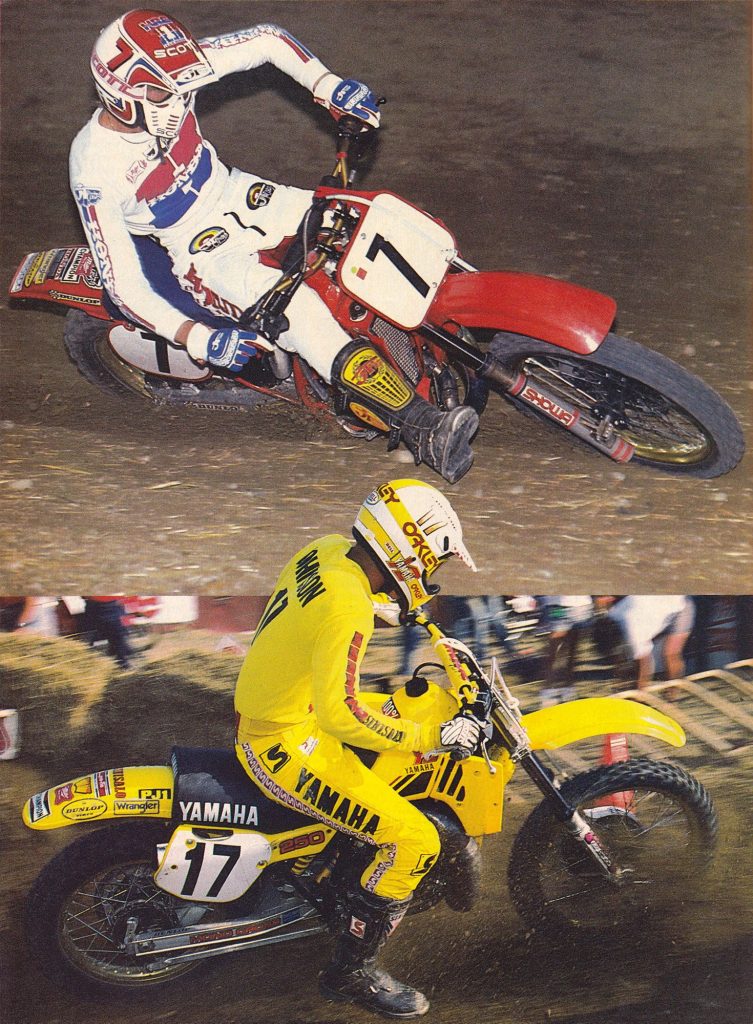 While the stock Yamaha YZ250 was a solid machine in 1984, it was not in the same galaxy of trickness as Ron Lechien’s works Honda RC250. The fact that Johnson was able to defeat Big Red on a production YZ is a testament to just what a badass the seven-time champ was on two wheels. Photo Credit: Dirt Rider
While the stock Yamaha YZ250 was a solid machine in 1984, it was not in the same galaxy of trickness as Ron Lechien’s works Honda RC250. The fact that Johnson was able to defeat Big Red on a production YZ is a testament to just what a badass the seven-time champ was on two wheels. Photo Credit: Dirt Rider
In the 125 class, however, things got a bit more difficult for Yamaha with the stock YZ offering a one-dimensional powerband that popped off in the middle and laid down everywhere else. Good-running 80s were more than a match for the stock YZ125 in 1984 and most serious racers found that the stock motor was difficult to make fast without seriously effecting its reliability. The new Z-spokes proved fragile on all of the ’84 machines and constant attention had to be paid to spoke tension lest you find yourself with a cracked hub. On the bright side, the YZ handled decently, and most people liked the feel of the new bodywork. With its narrow powerband and lack of horsepower, it was difficult for novices to keep on the pipe and far too slow for anyone with aspirations of being the next Johnny O’Mara or Jeff Ward. This left the new YZ125 in the awkward spot of being unsatisfying to everyone. Pretty to look at and advanced in many ways, the YZ125 was a disappointing machine that brought a knife to a gun fight in 1984.
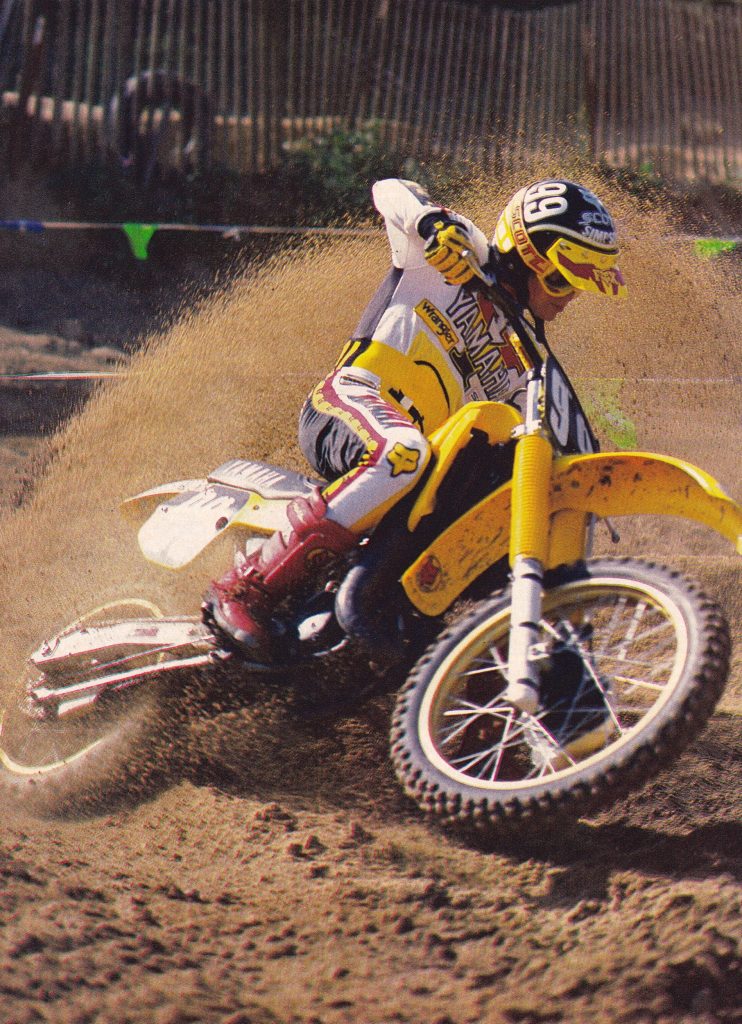 Big-time horsepower was not part of the YZ125 equation in 1984. Photo Credit: MOTOcross
Big-time horsepower was not part of the YZ125 equation in 1984. Photo Credit: MOTOcross
In the 80 class, the YZ80 proved more successful in 1984. More power, longer travel, and improved ergonomics highlighted a redesigned package that was thoroughly competitive against its rivals. Both the forks and shock were ranked at the top of the class and the YZ was well-regarded for its excellent handling and light feel. It was only on the motor front where the Yamaha lost out to its mini counterparts. The new 83cc motor lacked the broad power and torque of the Kawasaki and long pull of the Suzuki. Like its 125 big brother, the YZ80’s power was found mostly in the midrange, but it spread was broader and powerband was less difficult to use. This left the YZ80 one of the most competitive of all the stock YZs in 1984. Many riders ranked it as the top mini despite its horsepower disadvantage to the KX. Excellent handling, comfortable ergonomics, and well-sorted suspension made the YZ80 an excellent choice if max power was not the most important check box on your mini wish list.
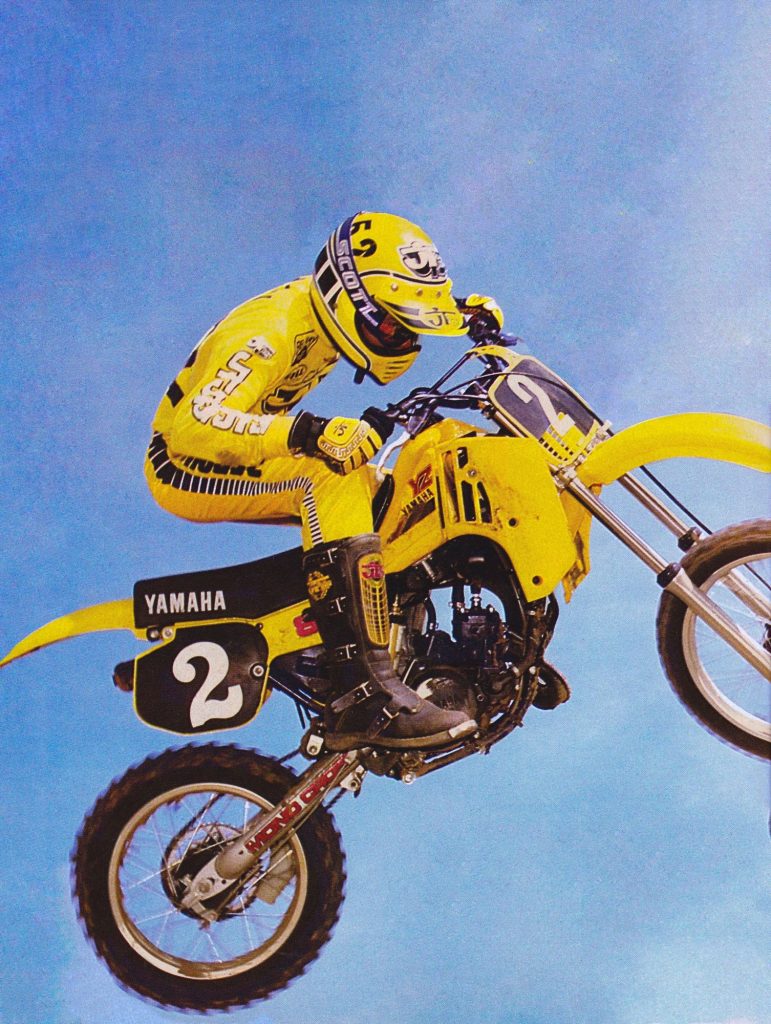 All-new for 1984, the Yamaha YZ80 offered one of the most well-rounded packages available in the 80 division. Photo Credit: Mini Cycle magazine
All-new for 1984, the Yamaha YZ80 offered one of the most well-rounded packages available in the 80 division. Photo Credit: Mini Cycle magazine
In 1984, Yamaha changed the American motocross landscape forever by campaigning production machines against a field of exotic rivals. The success of Johnson and Glover against Honda’s HRC skunkworks proved once again that motocross is about far more than the quality of the machine. Within two years, all the US-based factory teams would be on production-based machinery, signaling the end of the works bike era in America. While the merits of this move continue to be debated to this very day, there can be no denying that the change to production-based racing has elevated the quality and performance of all the machines we enjoy today.


